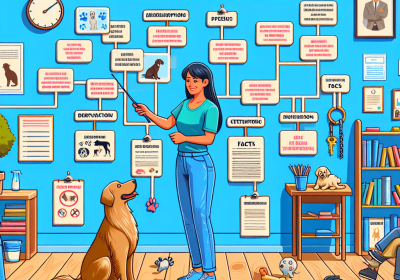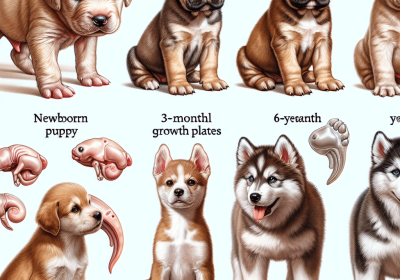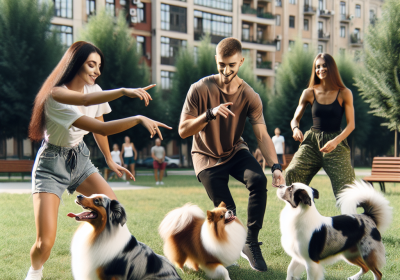Canine Freework for Working Breeds
Table of Contents
- Benefits Of Canine Freework For High-Energy Working Breeds
- Essential Equipment For Effective Canine Freework Sessions
Canine Freework for Working Breeds is a specialized training approach designed to harness and enhance the natural instincts and abilities of working dogs. This method focuses on providing structured yet flexible activities that stimulate a dog’s physical and mental capacities, ensuring they remain engaged, fulfilled, and effective in their roles. By incorporating elements such as scent work, agility, and problem-solving tasks, Canine Freework not only improves a dog’s performance in specific working tasks but also promotes overall well-being and reduces stress. This holistic approach recognizes the unique needs of working breeds, offering them the opportunity to thrive in both their professional duties and everyday life.
Benefits Of Canine Freework For Large Breeds
Canine Freework, a relatively new concept in the realm of dog training and enrichment, offers a multitude of benefits, particularly for large breeds. This innovative approach focuses on allowing dogs to engage in natural behaviors within a controlled environment, thereby promoting physical and mental well-being. For large breeds, which often face unique challenges due to their size and energy levels, Canine Freework can be especially advantageous.
One of the primary benefits of Canine Freework for large breeds is the enhancement of physical health. Large dogs, such as Great Danes, German Shepherds, and Saint Bernards, require ample exercise to maintain their muscular and skeletal health. Traditional exercise routines, while beneficial, may not always address the specific needs of these breeds. Canine Freework, however, encourages a variety of movements, including sniffing, exploring, and problem-solving, which can help to build and maintain muscle tone, improve joint flexibility, and prevent obesity. By engaging in these activities, large breeds can achieve a more balanced and comprehensive workout, reducing the risk of common health issues such as hip dysplasia and arthritis.
In addition to physical health, Canine Freework significantly contributes to the mental well-being of large breeds. These dogs are often highly intelligent and require mental stimulation to prevent boredom and associated behavioral problems. Canine Freework provides an opportunity for large breeds to use their cognitive abilities in a constructive manner. Activities such as scent work, puzzle-solving, and navigating different textures and surfaces can challenge their minds and keep them engaged. This mental stimulation is crucial in preventing destructive behaviors that can arise from boredom, such as chewing, digging, and excessive barking.
Moreover, Canine Freework fosters a stronger bond between the dog and its owner. Large breeds, due to their size and strength, can sometimes be challenging to manage, leading to potential strain in the human-animal relationship. By participating in Canine Freework, owners can better understand their dog’s natural behaviors and preferences. This mutual understanding can lead to more effective communication and cooperation, enhancing the overall relationship. Furthermore, the positive reinforcement techniques often used in Canine Freework can build trust and confidence in large breeds, making them more responsive and well-behaved in various situations.
Another notable benefit of Canine Freework for large breeds is the reduction of stress and anxiety. Large dogs can be more prone to stress due to their heightened sensitivity to environmental changes and social dynamics. Canine Freework allows these dogs to explore and interact with their surroundings at their own pace, which can be incredibly calming. The freedom to choose activities and the absence of pressure to perform can create a more relaxed and enjoyable experience for the dog. This reduction in stress can lead to improved overall health and a more balanced temperament.
Furthermore, Canine Freework can be tailored to accommodate the specific needs and limitations of individual dogs. For large breeds with mobility issues or recovering from surgery, low-impact activities can be incorporated to ensure they still receive the benefits without exacerbating their condition. This adaptability makes Canine Freework an inclusive and versatile approach suitable for dogs of all ages and health statuses.
In conclusion, Canine Freework offers a holistic approach to the well-being of large breeds, addressing both physical and mental health needs. By promoting natural behaviors, enhancing the human-animal bond, reducing stress, and providing tailored activities, Canine Freework stands out as a valuable tool for owners of large breeds. As awareness of this innovative approach grows, more large breed owners are likely to embrace Canine Freework, reaping the numerous benefits it has to offer.
Benefits Of Canine Freework For High-Energy Working Breeds

Canine Freework, an innovative approach to dog training and enrichment, offers numerous benefits for high-energy working breeds. These breeds, which include Border Collies, German Shepherds, and Belgian Malinois, are known for their intelligence, stamina, and drive. Consequently, they require more than just physical exercise to remain balanced and content. Canine Freework provides a multifaceted solution that addresses their physical, mental, and emotional needs.
One of the primary benefits of Canine Freework is its ability to provide mental stimulation. High-energy working breeds are often characterized by their keen intellect and problem-solving abilities. Traditional training methods may not fully engage their cognitive faculties, leading to boredom and potential behavioral issues. Canine Freework, however, involves a variety of activities that challenge a dog’s mind. These activities can include scent work, puzzle-solving, and navigating obstacle courses. By engaging in these mentally stimulating tasks, dogs are less likely to develop destructive behaviors born out of frustration or boredom.
In addition to mental stimulation, Canine Freework offers significant physical benefits. High-energy working breeds require substantial physical activity to maintain their health and well-being. While regular walks and playtime are essential, they may not be sufficient for these energetic dogs. Canine Freework incorporates diverse physical activities that cater to a dog’s natural instincts and abilities. For instance, agility exercises can improve a dog’s coordination and strength, while scent work can enhance their olfactory skills. These varied activities ensure that dogs receive a comprehensive workout, promoting overall physical fitness.
Moreover, Canine Freework fosters emotional well-being in high-energy working breeds. These dogs often thrive on having a sense of purpose and accomplishment. Traditional training methods may sometimes fail to provide this, leading to feelings of restlessness or anxiety. Canine Freework, on the other hand, allows dogs to engage in activities that are both enjoyable and fulfilling. By successfully completing tasks and overcoming challenges, dogs experience a boost in confidence and self-esteem. This sense of achievement can significantly reduce anxiety and promote a more balanced emotional state.
Furthermore, Canine Freework strengthens the bond between dogs and their handlers. High-energy working breeds are known for their loyalty and strong attachment to their owners. Engaging in Canine Freework activities together fosters a deeper connection and mutual understanding. Handlers learn to read their dogs’ body language and cues more effectively, while dogs become more attuned to their handlers’ commands and expectations. This enhanced communication and trust can lead to more effective training and a harmonious relationship.
Additionally, Canine Freework can be tailored to suit individual dogs’ needs and preferences. High-energy working breeds are not a monolithic group; each dog has its unique personality, strengths, and weaknesses. Canine Freework allows for customization, ensuring that each dog receives the appropriate level of challenge and stimulation. This personalized approach can address specific behavioral issues and enhance a dog’s overall quality of life.
In conclusion, Canine Freework offers a holistic approach to meeting the needs of high-energy working breeds. By providing mental stimulation, physical exercise, emotional fulfillment, and opportunities for bonding, it addresses the multifaceted requirements of these intelligent and driven dogs. As a result, Canine Freework can lead to happier, healthier, and more well-adjusted dogs, ultimately benefiting both the animals and their handlers.
How To Incorporate Canine Freework Into Your Working Dog’s Routine
Incorporating canine freework into the routine of a working dog, particularly large breeds, can be a highly beneficial practice. This approach not only enhances the physical well-being of the dog but also contributes significantly to its mental and emotional health. To begin with, it is essential to understand what canine freework entails. Essentially, it is a form of exercise that allows dogs to engage in natural behaviors such as sniffing, exploring, and problem-solving in a controlled environment. This type of activity is particularly advantageous for large breeds, which often require more substantial physical and mental stimulation compared to smaller breeds.
To effectively integrate canine freework into your working dog’s routine, it is crucial to start with a well-structured plan. Initially, identify a suitable environment where your dog can safely explore. This could be a spacious backyard, a local park, or a designated dog-friendly area. The key is to ensure that the space is secure and free from potential hazards. Once the location is determined, introduce your dog to the area gradually. Allow it to explore at its own pace, using its senses to investigate the surroundings. This gradual introduction helps to build confidence and reduces any potential anxiety the dog might experience in a new environment.
As your dog becomes more comfortable with the freework area, you can begin to incorporate various elements to enhance the experience. For instance, hiding treats or toys around the space can encourage your dog to use its natural hunting and foraging instincts. Additionally, setting up simple obstacles such as tunnels, ramps, or balance beams can provide physical challenges that promote agility and coordination. It is important to vary these elements regularly to keep the experience fresh and engaging for your dog.
Moreover, incorporating short training sessions within the freework routine can be highly beneficial. These sessions should focus on reinforcing basic commands and introducing new skills. The key is to keep the training positive and reward-based, ensuring that your dog remains motivated and enthusiastic. By integrating training into the freework routine, you can enhance your dog’s obedience and responsiveness while also providing mental stimulation.
Another critical aspect of incorporating canine freework into your working dog’s routine is to monitor its physical condition closely. Large breeds are often prone to joint and muscle issues, so it is essential to ensure that the activities are appropriate for your dog’s age, size, and health status. Regular veterinary check-ups can help to identify any potential issues early and allow for adjustments to the freework routine as needed.
Furthermore, it is important to consider the social aspect of canine freework. Allowing your dog to interact with other dogs in a controlled environment can provide valuable socialization opportunities. This interaction helps to build confidence and improve social skills, which are essential for a well-rounded working dog. However, it is crucial to supervise these interactions closely to ensure that they remain positive and safe for all dogs involved.
In conclusion, incorporating canine freework into the routine of a working dog, especially large breeds, requires careful planning and consideration. By providing a safe and stimulating environment, introducing varied elements, integrating training sessions, monitoring physical health, and facilitating social interactions, you can create a comprehensive and enriching routine for your dog. This approach not only enhances the physical and mental well-being of your working dog but also strengthens the bond between you and your canine companion.
Essential Equipment For Effective Canine Freework Sessions
Canine Freework, a dynamic and engaging approach to dog training, is particularly beneficial for working breeds. These breeds, known for their high energy levels and intelligence, thrive on activities that challenge both their minds and bodies. To conduct effective Canine Freework sessions, it is essential to have the right equipment. This ensures that the activities are not only stimulating but also safe and enjoyable for the dogs.
First and foremost, a variety of toys and interactive tools are indispensable. These items serve as the primary means of engaging the dog’s attention and encouraging problem-solving behaviors. Puzzle toys, for instance, are excellent for stimulating a dog’s cognitive abilities. They require the dog to think critically and use their problem-solving skills to access treats or other rewards hidden within the toy. Similarly, treat-dispensing toys can keep a dog occupied for extended periods, providing both mental and physical stimulation.
In addition to toys, agility equipment is crucial for working breeds. These dogs often have a natural inclination towards physical activity, and agility courses can help channel their energy in a productive manner. Equipment such as tunnels, weave poles, and jumps can be set up in various configurations to create a challenging and engaging environment. This not only helps in improving the dog’s physical fitness but also enhances their coordination and agility.
Moreover, scent work tools are highly beneficial for working breeds, many of which have a keen sense of smell. Scent work involves hiding scented objects for the dog to find, which can be incredibly rewarding and mentally stimulating. Essential items for scent work include scent kits, which contain various scents and containers for hiding them. These kits can be used to create a range of scent trails and challenges, catering to the dog’s natural instincts and providing a sense of accomplishment upon successful completion.
Furthermore, safety equipment is paramount in ensuring that Canine Freework sessions are conducted without any risk of injury. This includes items such as harnesses, leashes, and protective gear. A well-fitted harness is essential for controlling the dog during activities, especially when navigating agility courses or engaging in scent work. Leashes, on the other hand, provide an added layer of security, preventing the dog from wandering off or getting into potentially dangerous situations. Protective gear, such as paw protectors, can also be beneficial, particularly when working on rough or uneven surfaces.
Additionally, it is important to have a designated training area that is safe and free from distractions. This can be an enclosed yard, a dedicated room in the house, or even a local park with minimal foot traffic. The area should be free from hazards such as sharp objects, toxic plants, or other animals that could pose a threat to the dog. Having a controlled environment allows for more focused and effective training sessions, ensuring that the dog can fully engage with the activities without any interruptions.
In conclusion, the success of Canine Freework sessions for working breeds hinges on having the right equipment. From interactive toys and agility equipment to scent work tools and safety gear, each item plays a crucial role in creating a stimulating and safe environment for the dog. By investing in these essential pieces of equipment, owners can ensure that their working breeds receive the mental and physical stimulation they need to thrive.
Read more about Canine Freework
Canine Freework Activities for Different Dog Breeds
– Canine Freework for Large Breeds
– Canine Freework for Small Breeds
– Canine Freework for Working Breeds
– Canine Freework for Companion Breeds
– Canine Freework for Specialized Breeds (e.g. Herding, Hunting)






![The Dog Podcast Uncovers Startling Truths About What We Feed Our Dogs [Press Release]](https://storyforge.com.au/wp-content/uploads/2024/08/dogfood-400x280.jpg)


